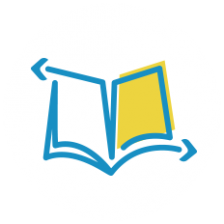Definition
As the term indicates, a visual impairment involves an issue with sight which interferes with a student’s academic pursuits. The Individuals with Disabilities Education Act (IDEA) officially defines the category as “an impairment in vision that, even with correction, adversely affects a child’s educational performance. The term includes both partial sight and blindness.”
Common Traits
Several conditions can cause visual impairments, and these disabilities can take a number of forms. The National Dissemination Center for Children with Disabilities (known as NICHCY) names a range of examples, including common conditions such as near-sightedness and far-sightedness, as well as more complex conditions like congenital cataracts and strabismus. While the causes vary, there are several common signs which may indicate that a child has a visual impairment. These include:
- Irregular eye movements (for instance, eyes that don’t move together or that appear unfocused)
- Unusual habits (such as covering one eye or frequently rubbing eyes)
- Sitting abnormally close to a television or holding a book close to the face
Educational Challenges
Intelligence does not require sight; therefore, overcoming educational challenges is vital to enabling a student with a visual impairment to reach his or her full academic potential. Such challenges may entail:
- Safely maneuvering around the classroom
- Conceptualizing objects
- Reading
- Operating standard educational tools such as calculators and word processing software
Tips for Teachers and Parents
Early intervention can help a child strengthen his or her vision. This means that as a parent, you should waste no time if you suspect that your child possesses a visual impairment. If this is the case, IDEA mandates that your child can receive a free evaluation to test for such a condition. NICHCY recommends contacting your public school system to start the process.
Regarding the previously mentioned educational challenges, Arizona’s Department of Education’s Parent Information Network advises orientation and mobility training to allow a student with a visual impairment to safely move around a classroom. Teachers, you might consider reaching out to the appropriate parties to learn if you can arrange classroom furniture a certain way to reduce possible dangers.
Challenges in conceptualizing objects occur because the student lacks the vision to process objects the way that his or her classmates do. Sensory learning works well as a solution, according to NICHCY. This strategy helps students with visual impairments conceptualize by allowing them to use their other senses to understand an object. NICHCY notes than parents can aid in sensory learning by using comments that teach a child to form a complete picture of an object from sensing the details. For example, you could say in reference to a stuffed animal “Wow! Your new stuffed bunny is fluffy! Feel his round tail.”
Finally, assistive technology can address issues related to reading and the use of educational tools. To identify some beneficial educational iPad apps for students with visual impairments read 7 Apps to Use as Assistive Technology. Resources such as large print books and braille books can also be helpful.






